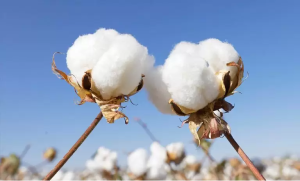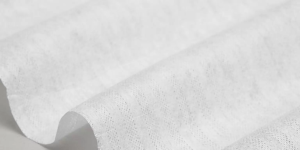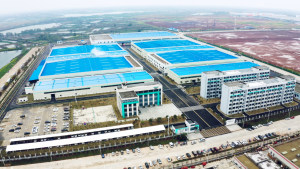Fabrics are indispensable materials in everyday life, widely used in fields such as clothing, home furnishings, healthcare, industry, and construction. According to different structures and processing methods, fabrics are mainly divided into two categories: woven and non-woven fabrics. Though they might look similar at first glance, they serve very different purposes.
So, what’s the difference between woven and non-woven fabrics? This article will compare their production processes, characteristics, and applications. Read on to learn more!
What are Woven and Non-woven Fabrics?
Before discussing the difference between woven and non-woven fabrics, let’s first understand “what is woven fabric textile” and “what is non-woven material.”
1. What is the Woven Fabric?
Woven fabric is a traditional textile made by interweaving two sets of yarn, one running lengthwise (warp) and the other crosswise (weft), according to certain rules. Its manufacturing process usually includes steps such as spinning, weaving, and finishing. This structured pattern gives the fabric:
- Stable structure:The vertical interweaving of warp and weft yarns gives the fabric good strength and stability.
- Multiple predictable shapes:Different styles of fabrics (such as cotton, denim, silk, etc.) can be made through different yarns and weaving methods (such as plain, twill, and satin weave).
2. What is the Non-woven Fabric?
Non-woven fabric is made without weaving or knitting. Loose fibers are laid out and bonded together using heat, pressure, or adhesives. The process is quick, cost-effective, and ideal for mass production. The non-woven structure made it:
- Diverse structures:The fiber arrangement (such as needle-punching, spunlacing, melt-blown, etc.) can be adjusted according to the needs to produce materials with different properties.
- Disposable or short-term use:Non-woven fabrics are more suitable for disposable products such as masks and wet wipes due to their processing methods.
Woven vs. Non-woven: What are the Differences?
Woven vs non-woven fabrics differ in performance, mainly reflected in breathability, moisture absorption, softness, durability, and cost.
1. Breathability
Woven fabrics are generally more breathable. Their interlaced yarns create small gaps that make airflow possible.
On the other hand, the breathability of non-woven fabrics varies greatly due to different processes. For example, melt-blown fabrics (used for masks) have lower breathability, while spunlace non-woven fabrics (used for wet wipes) are more breathable.
2. Moisture Absorption
The moisture absorption of woven fabrics depends on the fiber materials. For example, cotton and linen have strong moisture absorption, while polyester is weak.
Similarly, various non-woven fabrics also vary. Non-woven fabrics generally have relatively weak moisture absorption, but some personal care products (such as wet wipes and cotton soft towels) often use hydrophilic fibers to enhance absorbency.
3. Softness
The softness of woven fabrics varies due to materials. Silk woven fabrics are very soft and smooth, while coarse cotton fabrics are relatively rough.
Non-woven fabrics’ fiber arrangement is relatively loose, with a soft touch, especially the spunlace non-woven fabric, which is suitable for direct contact with our skin.
4. Durability
Woven fabrics are more durable as their structured weave holds up under repeated use and washing.
On the other hand, non-woven fabrics are usually meant for short-term use and tear more easily. These characteristics also determine their use.
5. Cost
Woven fabric textiles cost more due to time, labor, equipment, and various processes involved in weaving.
Non-woven fabrics are cheaper to produce. The process is fast, efficient, and requires fewer materials.
Applications of Woven and Non-woven Fabric
The following are applications of woven and non-woven fabrics:
1. Woven Fabrics
Woven fabrics are widely used in areas that demand durability and structure.
- Clothing:They form the base of shirts, trousers, jackets, and uniforms.
- Home textiles: Curtains, bedsheets, tablecloths, sofa covers, towels, and cushion covers also rely on woven materials for their strength and clean appearance.
- Industrial settings:They are used for items such as protective gear, tarps, canvas, seat belts, filtration membranes, and covers.
- Medical applications:Reusable gowns, lab coats, medical bed sheets, and surgical drapes where repeated use is required.
2. Non-woven Fabrics
Non-woven fabric materials are common in products designed for single use or where lightweight functionality matters.
- Healthcare and hygiene:They are used in disposable masks, gowns, medical dressings, and other sanitary products.
- Personal care items:Such as wipes, diapers, sanitary towels, and cosmetic pads also rely on them.
- Agriculture:They serve as plant covers, seedling bags, and soil stabilizers.
- Aerospace sector:Used as thermal insulation materials and protective clothing.
- Air and liquid filtration systems:Air filter, liquid filtration membrane, car filter. Non-woven fabric has high filtration efficiency, which can effectively remove particles and impurities from air and liquid.
- Packaging:Non-woven shopping bags, gift bags, cushioning materials, etc., which are lightweight and environmentally friendly products.
Winner Medical – Your Go-to Option for Cotton Non-woven Fabric
Non-woven fabric has become the material of choice for disposable protective and hygiene products, and for all good reasons. This fabric type has garnered popularity due to its lightweight nature, breathability, and cost-effectiveness. Most importantly, it allows manufacturers to meet strict health and safety standards without compromising comfort or functionality.
However, the issue arises when choosing a suitable manufacturer for non-woven textile needs. Winner Medical is a trusted cotton spunlace non-woven fabric manufacturer that comes with over three decades of medical experience. Over the decades, we have refined our products using high-quality cotton and advanced spunlace technology. Our proprietary pure cotton fabric blends the strength of non-woven manufacturing with the softness and safety of natural cotton, making it ideal for skin-contact products in both personal care and clinical settings.
From cosmetic pads and baby wipes to hospital gowns and surgical drapes, Winner Medical offers products that meet international standards for hygiene, safety, and sustainability. Our materials are biodegradable, chemical-free, and certified in over 30 countries, including the US and across the EU.
If you are looking for non-woven fabric products that balance quality, comfort, and environmental responsibility, Winner Medical’s cotton is, hands down, the most reliable choice.
Wrapping-Up
Woven and non-woven fabrics serve different purposes based on how they are made and where they are used. Woven fabrics offer strength and longevity, while non-woven are lightweight, affordable, and ideal for disposable products.
With innovations from companies like Winner Medical, non-woven cotton fabric is now a smart choice for those seeking comfort, safety, and sustainability in one material. Contact us now for more about this fabric!













